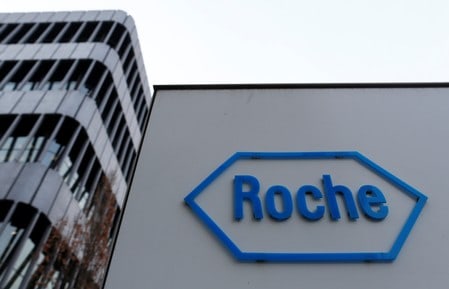By John Miller
ZURICH (Reuters) – Switzerland’s Roche and Novartis and other drugmakers are touting new treatments for a blindness-causing disease that hits millions of older people, as patent expiries are set to open up one of medicine’s most lucrative markets.
Roche’s experimental treatment faricimab showed long-lasting effectiveness against age-related macular degeneration (AMD), the Basel-based drugmaker said on Monday, potentially reducing the frequency of uncomfortable, direct-in-the-eye shots.
Molecular Partners, together with partner Allergan, and Novartis, also released data on new AMD medicines at an industry conference in Chicago.
For years, Lucentis, from Roche and Novartis, and Bayer and Regeneron’s Eylea, have dominated AMD treatment, with combined 2017 sales topping $9 billion.
With patent expiries starting in 2020, however, the scramble is on to preserve – or capture – a chunk of one of medicine’s hardest-fought areas, analysts said.
The AMD landscape is getting more crowded and less differentiated, with new medicines offering only marginal therapeutic improvements while remaining costly, said Baader Helvea analyst Bruno Bulic.
The question, Bulic said, is: “How long the cash cow can still be milked before the end?”
Potential pricing reforms under U.S. President Donald Trump could also disrupt the market.
The U.S. government-administered Medicare health plan for seniors spent $3.25 billion in 2016 on Eylea and Lucentis alone. The Trump administration is seeking ways to lower the cost of drugs on Medicare.
That could eventually help Samsung Bioepis of South Korea and Mylan, which are developing biosimilars of Lucentis and Eylea that are expected to be cheaper.[https://reut.rs/2qhPveW]
The new drugs will also still face competition from Roche’s Avastin, a cancer medicine used for years to treat AMD in many markets despite not being officially approved to do so. Avastin costs just a fraction of Lucentis and Eylea.
Last month, Novartis, Bayer and Roche lost a bid to stop British doctors from recommending Avastin, potentially clearing the way for Britain’s National Health Service to begin broader use of the cheaper drug.
Because new AMD drugs in studies have proven to be as effective, but not necessarily better, in helping vision as Eylea and Lucentis, their backers are seeking to underscore other benefits, like the need for less frequent shots.
Compared with monthly Lucentis injections, “data show the potential of faricimab to allow fewer injections while achieving and sustaining the same visual gains,” said Sandra Horning, Roche’s chief medical officer.
Novartis plans to submit its new drug, RTH258, to U.S. and European regulators in December, with approval due next year. It is promoting RTH258 data showing the drug is better than Eylea at controlling fluid in the retina, a hallmark of AMD.
($1 = 0.7795 pounds)
(Reporting by John Miller; Editing by Maria Sheahan and Mark Potter)


